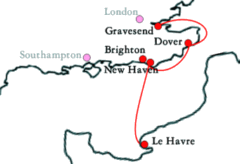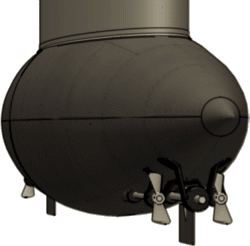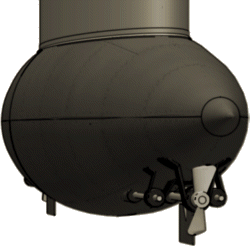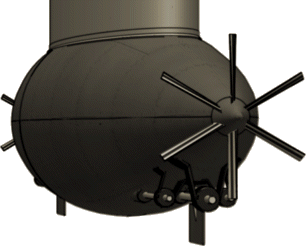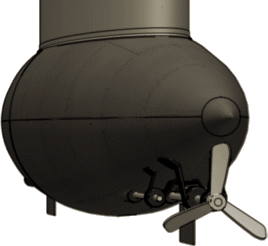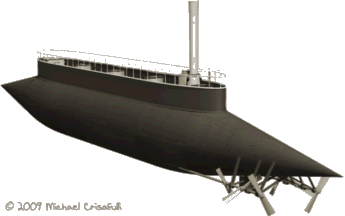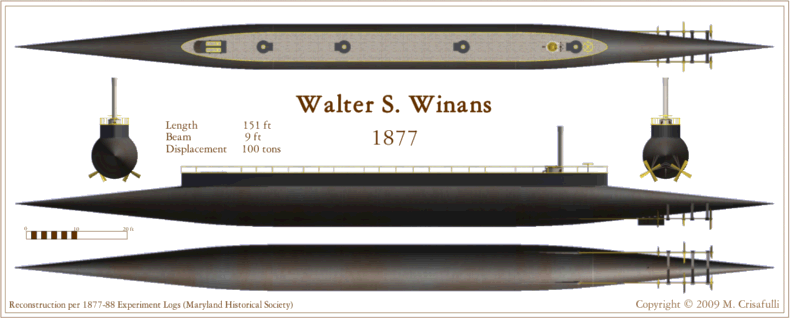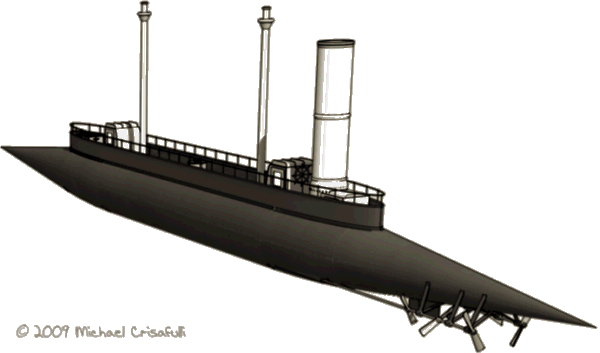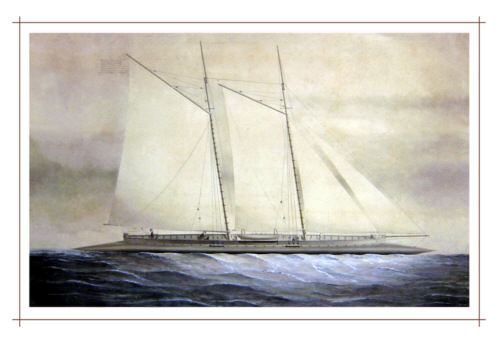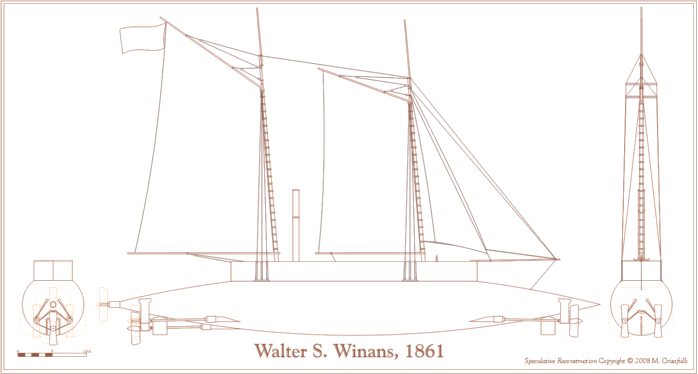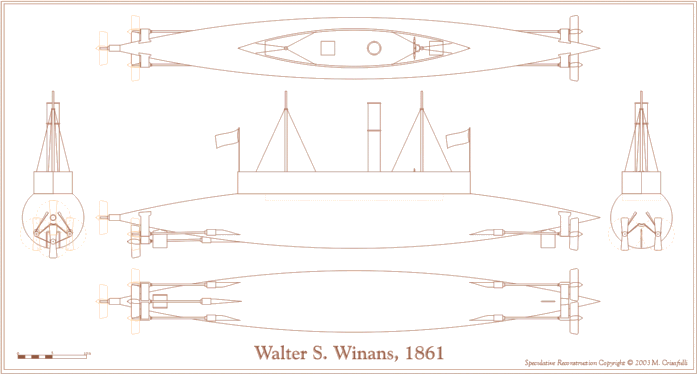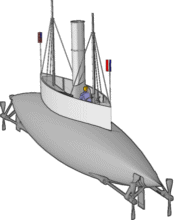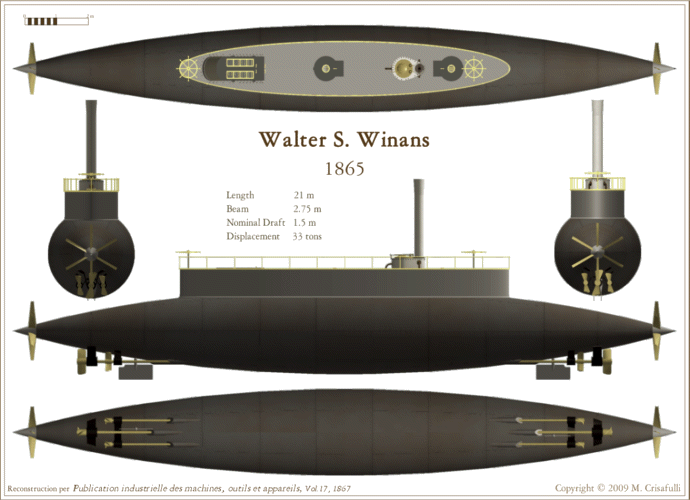
The 1866 Patent 58,743, nominally an improvement of rudder design, includes detailed descriptions and illustrations of the propeller and shaft arrangements for single and dual configurations.
In 2003, by applying all of these descriptions, I produced a speculative reconstruction illustrated later in this article. But in 2009 I came across an extraordinary new source in the French Publication industrielle des machines, outils et appareils (Publication of industrial machinery, tools and apparatuses). Volume 17, published in 1867, features an article, “Navigation à Vapeur - navire fusoiforme a hélice”114 (Steam Navigation - spindle-shaped screw steamer), that includes a detailed description of the "cigar-boat", apparently not yet named Walter S. Winans at the time of original publication and, in a separate volume of plates, a set of figures115 from M.M. Nillus and Son, the firm that constructed the boat. This marvelous plate, which I obtained from the Ecole Polytechnique Fédérale de Lausanne and, separately, from the Smithsonian Institution Libraries, provides us with engineering drawings of this cigar boat.
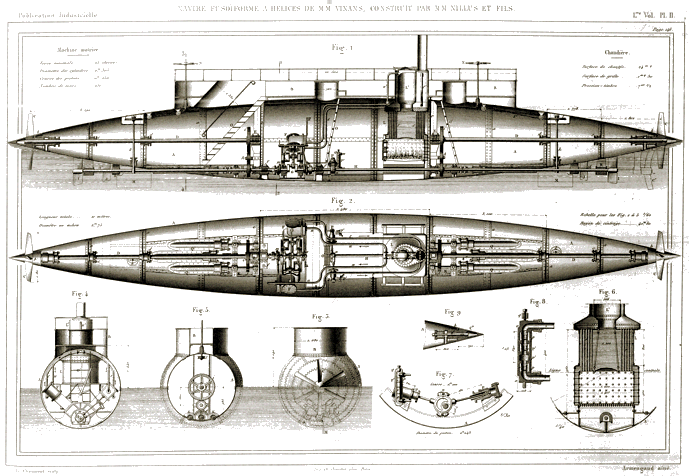
Per the Publication industrielle article114
and figures (shown above)115, the Walter S had
seven interior compartments, three of which were large enough for regular
access from the deck. The engine room,
amidships, was the largest, with the high-pressure boiler aft and the
engines forward. It's likely that this arrangement, combined with
removal of some of the forward equipment, resulted in the bow-high
appearance described in the Mercury. The drawings support the
Mercury assessment of inferior accommodations. An
ellipse-shaped gunwale topped with a rail surrounded the cluttered weather
deck. The deck had a small horizontal wheel at each end, a
companionway with stairs into the forward cabin, and cylindrical
hatchways with ladders into the engine room and aft cabin
respectively. The top of the boiler and stack rose above the deck
between the hatchways just aft of amidships.
The Walter S was designed as a test bed
for various propeller configurations. In addition to RossWinans-like,
six-bladed propellers on each end of the hull, there were three auxiliary
propeller shafts under the hull at each end, one below the centerline and
two outboard. The article indicates that “after inconclusive
experiments” (“après quelques expériences peu concluantes”)
the large propellers, shafts, and associated machinery were removed to
allow the two cabins to be used for passengers. The aft lower
central shaft was extended and a large ordinary propeller was added for
the cross-Channel voyage.
